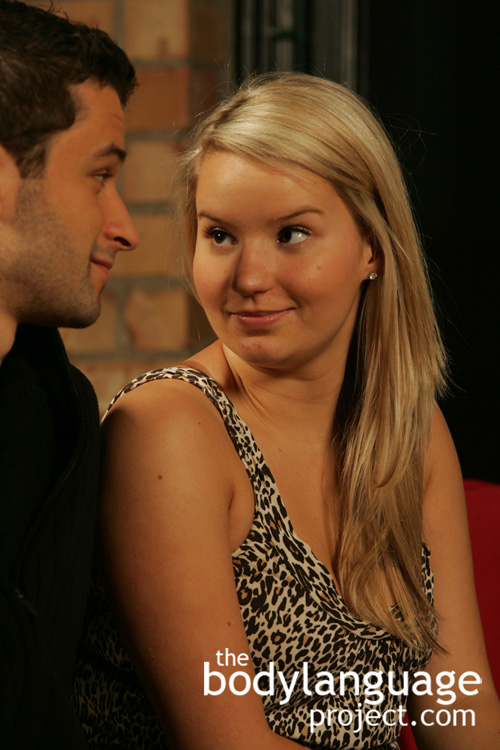Body Language of Face Palm and Double Face Palm
Synonym(s): N/A
Description: A gesture done by placing the hand or hands on the face or forehead cupping or conversely, lowering the face on to the palms rested on a surface such as a desk.
In One Sentence: The face palm signals frustration, disappointment, embarrassment, shock, surprise or even sarcasm.
How To Use it: Use the face palm to demonstrate that you feel embarrassed by what you just heard. It’s a nonverbal “Oh my God!”
You may also use the face palm to show others that you are suffering pain or grief. This can help garner sympathy and is not unlike the reaction children have to emotional discomfort. In this way, covering the face with the palms allows one to shield one’s self from view to escape further shame and embarrassment so can lessen the negative effects.
To appear in control and dominant, however, never cover the face – one should simply own up to their behaviour, shameful, or otherwise.
Context: General.
Verbal Translation: a) “The world is ending as I know it, I need to stop people from seeing my face as I stifle tears and also try to block any additional negativity from striking me.” b) “Oh my God, I can’t believe you just said that, what shame you have provided yourself.” c) “I feel stupid just being around you, I’m cowering in shame.”
Variant: See Face Wash (The).
Cue In Action: The stockbroker brought his hands up and covered his face. He watched helplessly while the stock market plunged wiping out his client’s equity.
Meaning and/or Motivation: The face palm indicates frustration, disappointment, embarrassment, shock, surprise or even sarcasm.
The face palm has roots in childhood where toddlers would hide and bury their face when crying in blankets or against the chest or lap of parents, so others wouldn’t see their grief or shyness.
Recent Internet usage has applied this gesture where one wishes to show disappointment and shame on forums and in comments following videos and articles. The face is covered to hide frustration through a desire to block and shield external stimuli from entering and hide emotions from the view of others.
Cue Cluster: The face and eyes will wince and scrunch, eyebrows lower, tears may form, and deep frustration will come across the face. The shoulders will slump and the torso will bend at the waist. If standing the torso may bend backwards as if praying.
Body Language Category: Auto contact or self touching, Barriers, Depressive,
Disengagement, Embarrassment (nonverbal), Escape movements, Eye blocking, Frustration or frustrated body language, Negative body language, Pseudo-infantile gestures, Protective reflexes, Shy nonverbal.
Resources:
Brown, B. R. (1970). Face-saving following experimentally induced embarrassment. Journal of Experimental Social Psychology, 6, 255–271.
Bond, Michael H., and Hiroshi Komai (1976). “Targets of Gazing and Eye Contact During Interviews: Effects on Japanese Nonverbal Behavior.” In Journal of Personality and Social Psychology (Vol. 34), pp. 1276-84.
Blakeslee, Sandra (1995). “In Brain’s Early Growth, Timetable Maybe Crucial.” In New York Times (“Science Times,” August 29), pp. C1, C3.
Dong, Ping ; Huang, Xun (Irene) ; Wyer, Robert S. The Illusion of Saving Face
Psychological Science. 2013. 24(10): pp.2005-2012.
Ekman, Paul, and Wallace V. Friesen (1969). “Nonverbal Leakage and Clues to Deception.” In Psychiatry (Vol. 32), pp. 88-106.
Goodall, Jane (1986). The Chimpanzees of Gombe: Patterns of Behavior (Cambridge: Belknap Press of Harvard University).
Givens, David B. (1976). An Ethological Approach to the Study of Human Nonverbal Communication (University of Washington Ph.D. dissertation in Anthropology, Ann Arbor: University Microfilms).
Grand, Stanley (1977). “On Hand Movements During Speech: Studies of the Role of Self-Stimulation in Communication Under Conditions of Psychopathology, Sensory Deficit, and Bilingualism.” In Norbert Freedman and Stanley Grand, eds., Communicative Structures and Psychic Structures: A Psycholanalytic Interpretation of Communication (New York: Plenum Press), pp. 199-221.
Keltner, D. (1995). The signs of appeasement: Evidence for the distinct display of embarrassment, amusement, and shame. Journal of Personality and Social Psychology. 68: 441–454.
Keltner, D., & Buswell, B. N. (1997). Embarrassment: Its distinct form and appeasement functions. Psychological Bulletin. 122: 250–270.
Kenner, Andrew N. (1993). “A Cross-Cultural Study of Body-Focused Hand Movement.” In Journal of Nonverbal Behavior (Vol. 17, No. 4, Winter), pp. 263-79.
Morris, Desmond (1994). Bodytalk: The Meaning of Human Gestures (New York: Crown Publishers).
McGrew, W. C. (1972). “Aspects of Social Development in Nursery School Children with Emphasis on Introduction to the Group.” In N. G. Blurton Jones, ed., Ethological Studies of Child Behaviour (Cambridge: University Press), pp. 129-56.
Miller, R. S. (1987). Empathic embarrassment: Situational and personal determinants of reactions to the embarrassment of another. Journal of Personality and Social Psychology,
53, 1061–1069.
Modigliani, A. (1971). Embarrassment, facework, and eye contact: Testing a theory of embarrassment. Journal of Personality and Social Psychology, 17, 15–24.
Pugh, George E. (1977). The Biological Origin of Human Values (New York: Basic Books).
Rosenfeld, Howard (1973). “Nonverbal Reciprocation of Approval: An Experimental Analysis.” In Argyle *, pp. 163-72.
Sommer, Robert (1969). Personal Space: The Behavioral Basis of Design (Englewood Cliffs, New Jersey: Prentice-Hall).
Lee, S. W. S., & Schwarz, N. (2010). Dirty hands and dirty mouths: Embodiment of the moral-purity metaphor is specific to the motor modality involved in moral transgression.
Psychological Science, 21, 1423–1425.
Xu, A. J., Zwick, R., & Schwarz, N. (2012). Washing away your (good or bad) luck: Physical cleansing affects risk-taking behavior. Journal of Experimental Psychology: General, 141, 26–30.
Zhong, C. B., & Liljenquist, K. (2006). Washing away your sins: Threatened morality and physical cleansing. Science, 313, 1451–1452.


